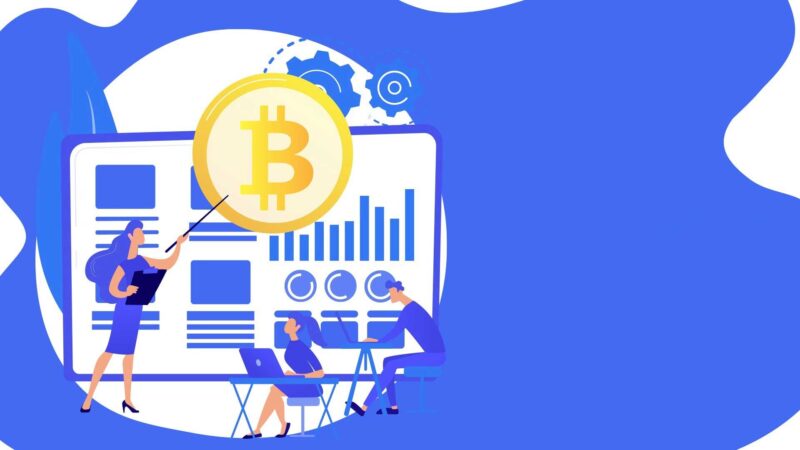Ever wondered why some of the coins that you hold do worse than others? One reason that is often overlooked is tokenomics, and this honestly could make or break a project’s performance, even if they have an amazing team, groundbreaking technology, and everything else that you can ask for.
In this article I’m going to explain why tokenomics are so important, I’ll give you specifics of what you should look for and end with a discussion of what does it mean to have good tokenomics.
First, what do I mean by tokenomics? It’s literally short for token plus economics, it’s the economics of a token/coin. You can think of each crypto project as having its own economy surrounding its token, but unlike our regular economy where the rules are set by the government and central bankers, crypto economies are completely controlled by code. This means things like what the token is used for, what the inflation rate is, who receives tokens as rewards are all defined by the underlying protocol.
These crypto projects are essentially creating their own micro economies with the goal of becoming self-sustaining. That’s why it’s so important to define the tokenomics properly, or else you may find yourself in a scenario, where the token price goes haywire, rendering the project unusable. Or another scenario, where it’s so unappealing for new users/investors to enter that the project has nowhere else to go but the graveyard.
That’s why I say that it’s make or break for every crypto project to get their tokenomics right. but enough with the high-level stuff, let’s dig into some specific metrics that you can evaluate for each project.
Starting with market cap, this is a simple one, you take a token’s price times its circulating supply to get its market capitalization. This is a much better way to compare tokens instead of focusing on the raw price. For example, Lisk (LSK) and Cardano (ADA) are both around two dollars per coin. But if you take into consideration supply, Lisk has around a 300-million-dollar market cap whereas Cardano has 65-billion-dollar market cap. See the huge difference? that’s why market cap is the better indicator of a token’s economic valuation. Keep in mind that a market cap also gives us a sense, for how easy it is to manipulate a token’s price. In either direction, aka the lower the market cap the easier it is to manipulate.
Another related metric here is fully diluted market cap. This is just using the maximum supply of a token instead of the currently circulating supply to do the calculation. Remember, some projects have tokens locked up for later distribution. Here’s the thing, some people are turned off when they look at a project’s fully diluted market cap, and they see some ginormous number like even larger than Ethereum’s market cap. Personally, I wouldn’t pay too much attention to that because A) that just means that a small percentage of their tokens are currently available, and B) it doesn’t tell you anything about the release schedule or if there’s any deflationary pressure, etc.
All of that matter and can affect future valuation. Do not assume that the price and all those other factors will remain the same as more tokens are released into circulation. Which is what this metric is doing essentially.
Next up is max supply. Which we’ve already kind of touched on but basically some tokens do not have its full supply available at launch. They lock up some for vesting purposes so that early investors can’t dump all at once, or maybe they keep some for staking rewards that is released over a long period of time. Basically, this metric gives you an idea of how many more tokens need to be absorbed by the market in the future. Keep in mind that some projects don’t have a cap on future inflation, so in that case they do not have a max supply. That leads us perfectly to our next part, which is monetary policy.
Basically, this has to do with the inflation or deflation of the token supply, aka how fast are tokens released in the future, and how does that rate change over time. Are there any deflationary pressures like burning of the fees? and how do all those things come together to affect the overall supply.
There’s a lot to evaluate here but keep in mind that there’s not one right monetary policy. Like inflation is not always a bad thing, it could really help incentivize stakers that keep the network decentralized and secure. And having a freak ton of deflation doesn’t guarantee price performance either, just look at SafeMoon.
My whole point here is that monetary policy is like a glove, it needs to fit a project’s goals and not be arbitrarily set just because some other project did it that way.
Next metric is the token distribution aka how are the tokens split up, and what is each chunk for. You can imagine each token supply being represented by a pie chart, and then different sections represent tokens for the team, for stakers, for the community, whatever really. It’s especially important to know how the tokens were split up at launch, and this is called the initial token distribution. Because if a small number of insiders hold a lot of the tokens, then its price is at much higher risk of manipulation, like sudden dumps or unnatural pumps.
Ideally, every project would be a completely fair launch, which just means that everyone gets a chance to buy tokens from the get-go. In that case the tokens are distributed more widely from the beginning, but that’s not always realistic so if there is a pre-mine you should take a closer look at some other details such as private sale prices. Most crypto projects that raise money through token sales don’t just have one single round that’s the same price for everybody. Instead, they often do multiple rounds with different rules in terms of allocation price, and who can participate the earliest rounds are generally reserved for private investors like VCs. And they of course get in at the lowest price per token.
That’s why it’s so important to find out these details so that you can know what price these private investors got in at, and how many tokens they received in return. You can use this info to gauge their willingness to sell at any given price level, by calculating how much they are in profit.
For example, let’s say that we’re in the middle of a deep bear market, and all of our bags are in the negative, but private investors may still be in massive profit because they got in at such low prices. This means that the selling pressure for that particular project may not be over anytime soon until most of them end up selling in order to lock in their profits.
One key consideration that’s related to this is my next metric, the unlock schedule. Some projects lock up some of their tokens and then release them over time. The unlocked schedule specifies what percentage is released to who and at what intervals. One example of this is vesting schedule for early investors. Instead of letting them get 100% of the tokens immediately after launch, they may get 25% in year one, 25% in year two, and so forth until they receive their entire balance.
It’s super important to know the schedule so you can know when to expect a large increase in the circulating supply, because that may cause the price to dump or at least serve as some resistance.
Last but not least, you cannot evaluate a project’s tokenomics without understanding its token utility as well. Here are six common themes I’ve seen tokens being used for. First is for payments, basically the token aims to be a currency that can be used to pay for goods and services, Bitcoin or Litecoin are great examples of this.
Second is for transaction fees, this is where you are charged some tokens in order to perform transactions on the network, Ethereum is a great example of this. Third is for access to network
Services, like for Filecoin you can pay in their tokens in order to store and retrieve data. Fourth is for discounts or cash back, we usually see this with exchanges where if you hold or use their token, you get a discount of the trading fees or earn cashback in their tokens. Binance gives you fee discounts for holding BNB and crypto.com’s debit cards give you cashback rewards and their CRO token.
Fifth is for staking. For proof of stake blockchains you can use their tokens for staking and be a validator. This helps increase the network security and decentralization, and the best part is stakers and validators are usually rewarded in the form of more tokens.
Last but not least, sixth is for governance. These are for projects where token holders collectively manage and change the protocol by voting on various proposals. You see this often with DeFi projects where token holders control the interest rates or decide which assets to add or remove. Generally speaking, the more tokens you hold the more weight your vote gets.
I have to admit that was a lot to digest, but hopefully you have a better idea of what to look for when you go evaluate at projects to economics. Let’s take a step back and talk overall strategy because I have some tips for you that may seem counterintuitive.
First is that no project is going to be perfect on all of these categories, it’s ultimately up to you to evaluate them holistically and make a judgment call. Second is that while tokenomics are super important it doesn’t guarantee a project’s success either. There are a lot of other factors that come into play. I’ve even seen some projects with terrible tokenomics do well because they get saved by other factors like dogecoin. Terrible tokenomics but superb community and meme power.
In an ideal world, tokens offer true utility within their ecosystem, and people are incentivized to hold or use the token for reasons beyond speculation. When you go do your research on a project’s tokenomics you can use websites like CoinMarketCap, Etherscan, ICODROPS and MESSARI to find the info you need. If some piece of info is not available then go ask the team, and if they refuse to share it, then that’s a huge red flag.
I hope this all makes sense and you learned something new that you can use today.




